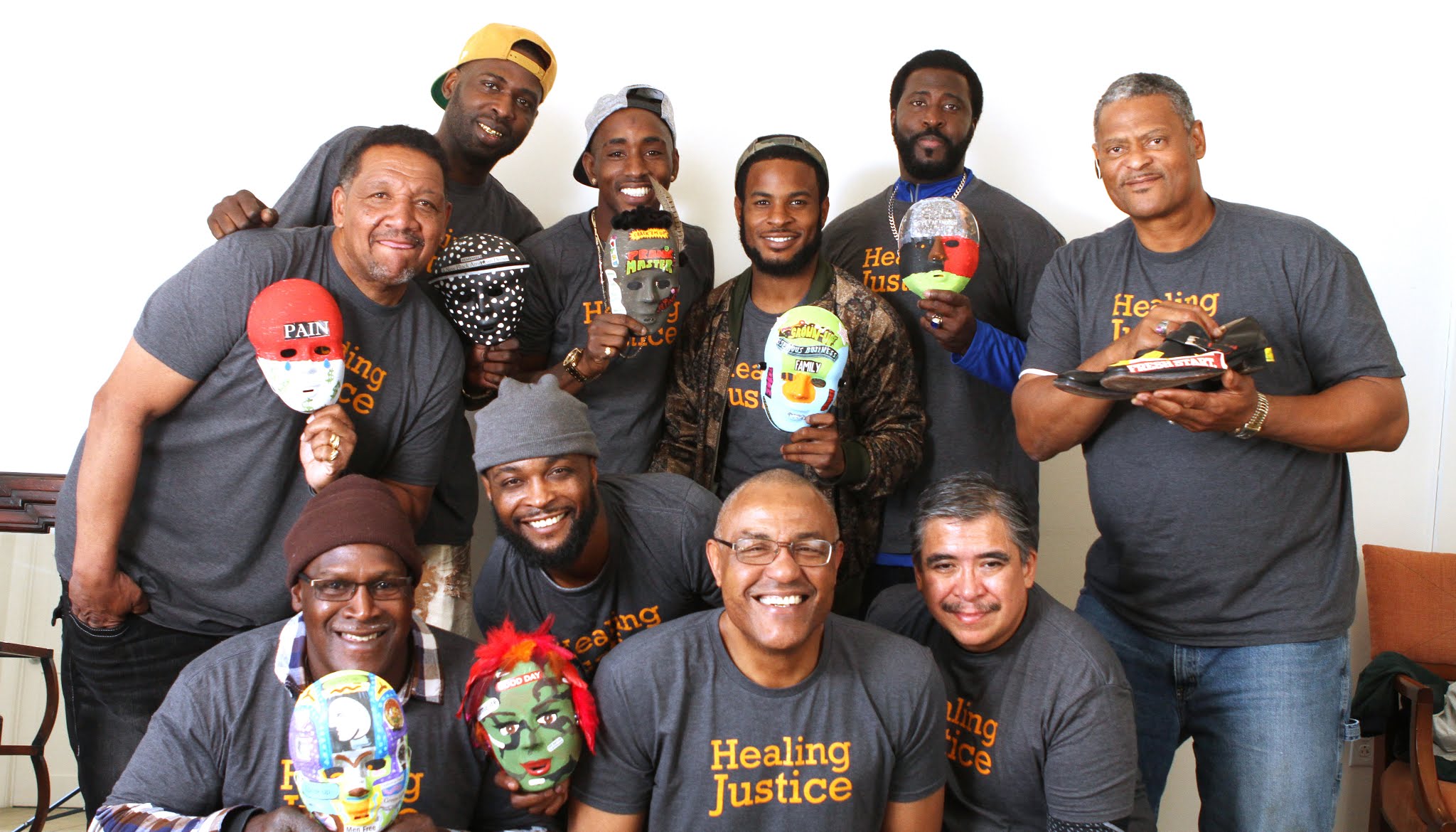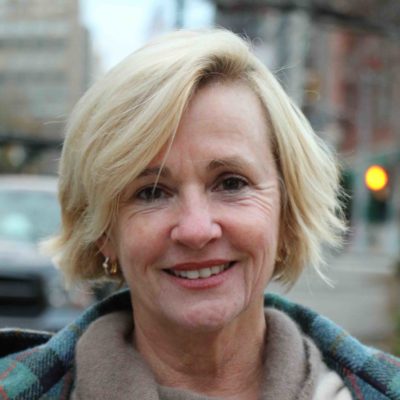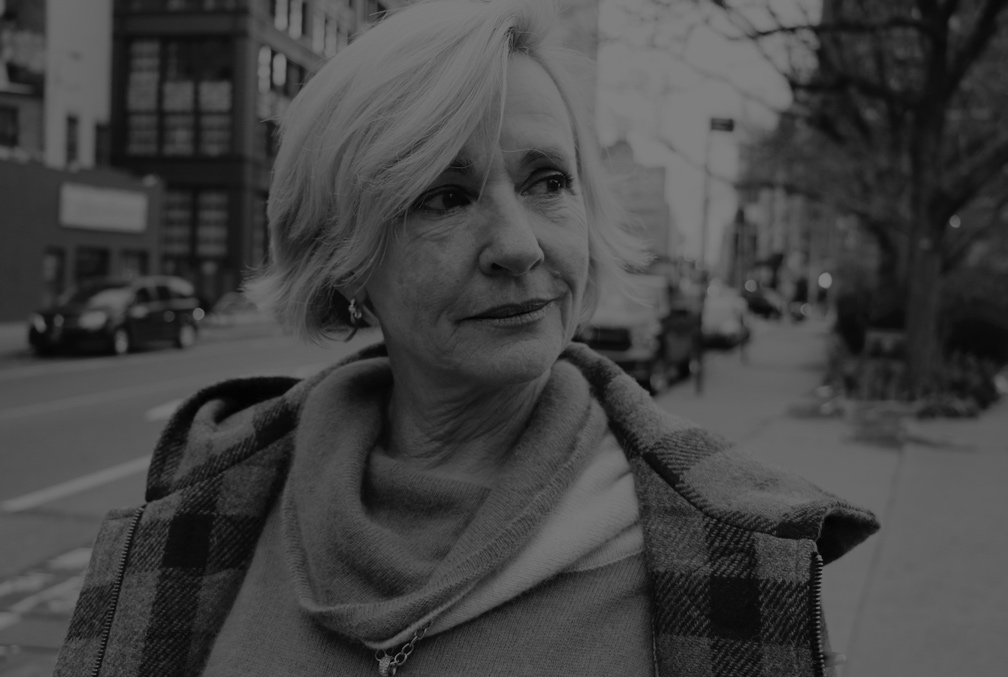
Exonerees and their family members at a Healing Justice retreat in April 2018.
An interview with crime survivor and wrongful conviction advocate Jennifer Thompson.
Special Feature 03.27.19 By Emma Zack
In honor of Women’s History Month, we interviewed Jennifer Thompson, the founder and board chair of Healing Justice, a non-profit that provides opportunities for healing in cases involving wrongful convictions and exonerations. Thompson is a rape survivor from a case involving a wrongful conviction and is a co-author of the New York Times Bestseller, Picking Cotton. Through our conversation, we learn about Thompson’s own healing process as a crime survivor in a wrongful conviction case, what motivated her to start Healing Justice, how restorative justice plays a crucial role in the organization, what programs it offers and why it is such a unique and important organization for anyone harmed by a wrongful conviction case.

I became involved as a crime survivor whose case resulted in a wrongful conviction and, over ten years later, an exoneration. When Ronald Cotton was exonerated on June 30, 1995, I’d never heard of the Innocence Project or even the term ‘wrongful conviction.’ I’d certainly never heard the term ‘exoneree.’ It was Ron’s exoneration that led me to begin to wrap my mind around what had happened to both of us.
A few years after Ron’s exoneration, I agreed to participate in a PBS film titled, What Jennifer Saw. The film led to Ron and I meeting each other and reconciling in February 1997. That’s when the Innocence Movement found me. I think I became the first crime survivor to speak about wrongful convictions. From there, everyone wanted a part of me.
I was driven to start Healing Justice based on my own experience with a failed justice process and the extensive residual harm done not only to those who are wrongfully convicted, but also to the original crime victims, both sets of families and everyone else affected. These harms have ripple effects that expand across generations and far into the community. Healing Justice was founded to address these concentric circles of harm.
But it took me a while to grow into this role. When Ron and I became friends in 1997, our story was broadcast everywhere. People all over the world asked me to do interviews and to present at conferences. I was paraded on stages and in front of cameras. I was young, and at this point, I didn’t understand what had happened to my mind or memory during the assault, nor did I know anything about fallible identification procedures used by police at the time.
I wasn’t at a place where I could advocate for myself. I felt like this was what I was supposed to do—that I was supposed to be puppeted all over the world to atone for my role in Ron’s wrongful conviction. I would find myself, hundreds of times, getting before cameras and audiences and being publicly flogged for what Jennifer Thompson had single-handedly done to Ronald Cotton. I allowed the narrative to be: “Rape victim falsely identified an innocent man and sent him to prison not once, but twice.”
It would take me until 2013 to understand all of the things wrong with that narrative. The reality is: I can’t send anyone to prison; it takes the police, prosecutors and courts to do that. And I certainly never wanted the wrong person to go to prison. A stranger committed a terrible crime against me, and I did my best under the circumstances to help the police find that person.
Unbeknownst to me, the police department designed the lineup and put Ron in it based on a tip from someone else. I was then led through the identification process, which included Ron but not the perpetrator. I did what I felt I was supposed to do—to help solve the crime. Police reassured me I had chosen the person they believed was responsible.
Later, it was the state of North Carolina that charged Ron and brought him to trial where a jury found him guilty and a judge sentenced him. I didn’t have any control over that. And the result was that the criminal justice system failed us both. The actual perpetrator, Bobby Poole, is also to blame.
In 2013, Katie Monroe, who is the daughter of an exoneree and now the executive director of Healing Justice, moderated the first-ever panel of all crime victims and survivors at the Innocence Network Conference in Charlotte, NC. She wanted the Innocence Movement to understand the catastrophic effect wrongful convictions have on the original crime victims and survivors.
I am so glad I agreed to be on the panel, because it was life changing. It blew my mind when Katie asked: “How did the wrongful conviction harm you?” Even though I had told my story more times than I could count, no one had ever bothered to ask me about how I was harmed until this conference.

Exonerees and their family members at a Healing Justice retreat in April 2018.
Sharing my story on the panel helped me realize that I had gotten terribly hurt and traumatized—not just by the horrible crime against me but also by discovering a decade later that the actual perpetrator had not been convicted and instead an innocent person had been sent to prison. But, in the wake of the Ronald Cotton story, Jennifer Thompson was forgotten and blamed. People would always ask Ron, “How could you ever forgive her?” And, ‘her’ would be standing right there next to him, and ‘her’ would be thinking, “I’m not sure if you heard the beginning of the story, but I was almost killed and my attacker went free.”
I believe this panel created a shift in the narrative about wrongful convictions—not just for us as crime survivors, but within the entire Innocence Movement. It made people recognize that for every exoneration, there’s a crime survivor who was the first person to be impacted. Before this panel, we were left at best being ignored, and at worst being blamed.
Because of my relationship with Ron, I had known all along that to achieve total healing it is imperative for us to hear each other’s stories. And if we don’t, we can’t truly understand the total harm done when the criminal justice system failed us all. I couldn’t have progressed in my own recovery had I not been able to hear from Ron about his experience. And I know he would say the same about hearing my parallel journey through this failed criminal justice process.

Jennifer Thompson and Katie Monroe in 2018. Photo: Alicia Maule.
In 2015, Ron and I were given the Special Courage Award from the U.S. Department of Justice’s Office for Victims of Crime. I decided then that it was time to build a national movement to discuss the aftermath and aftercare of wrongful convictions for everyone involved. I believed we could use restorative justice principles to create physically and emotionally safe spaces where people impacted by wrongful convictions could sit together and share their stories. In those spaces, we could engage in collective resilience, collective grief, collective joy and collective healing.
Healing Justice was born out of my own experience. It was born out of my own bone marrow. I believe it could work, and I believe it does.
Restorative justice is quite simple. It means asking the questions: how were you harmed? What did you then and what do you need now? And who do you need it from? Restorative justice is used in families, businesses and communities where harm has been created.
True restorative justice is victim-initiated, and the perpetrator has to be present. As we were building Healing Justice, Katie and I worked with national restorative justice leaders and asked if we could provide ‘surrogates’ in the place of perpetrators, because in very few wrongful conviction cases do we find or have access to the actual perpetrator. The criminal justice system is, of course, the offender as well.
The answer from restorative justice leaders came back a resounding “absolutely.”
For healing to occur, Katie and I believed people affected by wrongful conviction cases needed to hear from and understand one another’s journeys. For example, exonerees who were wrongly convicted of rape should hear from rape survivors—maybe not from their case, but from another case. Or, for a murder victim’s family to hear from an exoneree—maybe not the exoneree from their case, but another exoneree who was wrongly convicted of murder.

“Healing Justice was born out of my own experience. It was born out of my own bone marrow. I believe it could work, and I believe it does.”
“Healing Justice was born out of my own experience. It was born out of my own bone marrow. I believe it could work, and I believe it does.”
Jennifer Thompson
Jennifer Thompson in 2018. Photo: Alicia Maule.
Using restorative justice principles, we seek to create individual and collective healing for all those harmed by wrongful convictions—the original crime victims and their families, the exonerated and their families, jurors, law enforcement, attorneys and judges.
Our cornerstone program is our healing retreats, where people impacted by wrongful convictions convene for three days and two nights to share their experiences, bond over similar traumas and provide support and understanding to one another. We use restorative justice circles to create a safe, nurturing environment, and we do therapeutic activities that help people recover emotionally from the traumas they’ve suffered. Past participants help to co-facilitate the retreats, and our social work staff provides emotional support as needed.
We currently offer four retreats a year, at no cost to the participants. Since January 2016, we’ve hosted ten retreats with participants from around the country. The feedback from these retreats has been amazing.
Another signature program is our listening sessions, which give people an opportunity to share their lived experiences with others and to inspire reforms. The “listeners” are typically criminal justice officials and policymakers. The organization relies on these sessions to learn from those we serve, better understand their needs and directly involve them in the creation of our programs and resources.
We also provide training to criminal justice practitioners and social service providers, giving them the tools to improve the way people are treated and served both before and after an exoneration. Every presentation includes the voices of people with lived experiences.
An exciting new development is that we were recently awarded a U.S. Department of Justice grant that allowed us to launch the first-ever project focused on the experiences and needs of original crime victims and survivors from wrongful conviction cases. Our goals are to understand what they went through and to develop resources to give them better support and services. The project started with a listening session where we asked question such as, “What did they need? What was available to them at the time? How were they treated?” Beyond the resources we are creating, this project has helped to give crime victims and survivors back their voices, many of which were taken decades ago.
Healing Justice is the only national non-profit that works with all folks harmed by wrongful convictions. What makes us so unique is the bringing together of shared and similar experiences to engage in both individual and collective healing—healing across the entire community harmed by these cases, and healing the justice system itself. Hence the name: Healing Justice.
Another thing that makes Healing Justice unique is that all of our work is led by people who have survived or been impacted by a wrongful conviction. We believe in learning from, and creating programs and resources by, people who have survived and lived through a wrongful conviction.
A lot of it is discovering where the harm exists so that healing can happen. Before coming to a healing retreat, many of our participants didn’t want to look into where their grief was lodged. At our retreats, we make clear that we’re not going to delve into anyone’s case; we aren’t going to discuss any negligence or malicious conduct on the part of the criminal justice system. Rather, we’re going to confront the question: “What did you lose? How were you harmed? What do you need to heal?”
Another takeaway is direct peer-to-peer support from meeting people with similar experiences. It’s having moms connect with other moms. It’s having children connect with other children. It’s having siblings connect with other siblings. These individuals bond during the retreats and continue to stay in touch afterwards. I’ve heard wonderful things about the important friendships and peer supports created by the retreats.
Even meeting people with different experiences helps the healing process. For example, when an exoneree who was wrongfully convicted of rape listens to a rape survivor from the same or a different wrongful conviction case, they are able to better understand what the survivor in their case experienced and may still be experiencing.
People leave the retreats with specific tools and life skills to help them continue in their healing and rebuilding. They leave feeling like their experience has been validated and their voices restored, leading to more healing and rebuilding.
We’re developing new and better ways to measure the impact of our retreats—of all of our programs—on the people we serve, so we can be assured that our efforts are working and improve them wherever needed.

“I was able to reconnect to the person I left behind when I was sent to prison.”
“I was able to reconnect to the person I left behind when I was sent to prison.”
Exoneree, after attending a Healing Justice retreat
The ‘letting go’ ceremony at a Healing Justice retreat. Photo: Magali deVulpillieres.
You have no idea. I’m 56 years old, and this happened when I was 22. For the first time in my life, I feel like I have permission to tell the Jennifer Thompson story. And within the Jennifer Thompson story is also my friend Ronald Cotton’s story.
I am now at a place where I can talk about my harm and what happened to me; what happened to Ron; what happened to us. I am no longer willing to take public beatings ever again. And I will, with the best of my ability, prevent it from happening to other crime victims and survivors as these cases unfold.
Ron and I will always be close. He’s a huge part of my life.
For anyone reading this article, how can they support Healing Justice?
Like any small but rapidly growing nonprofit, we need people to support us with financial donations so that we can continue our momentum and expand our impact. We also need people to help spread the word about our unique work. I encourage people to check out our website, www.healingjusticeproject.org, to learn more and to get involved. You can contact us at [email protected].
Leave a Reply
Thank you for visiting us. You can learn more about how we consider cases here. Please avoid sharing any personal information in the comments below and join us in making this a hate-speech free and safe space for everyone.